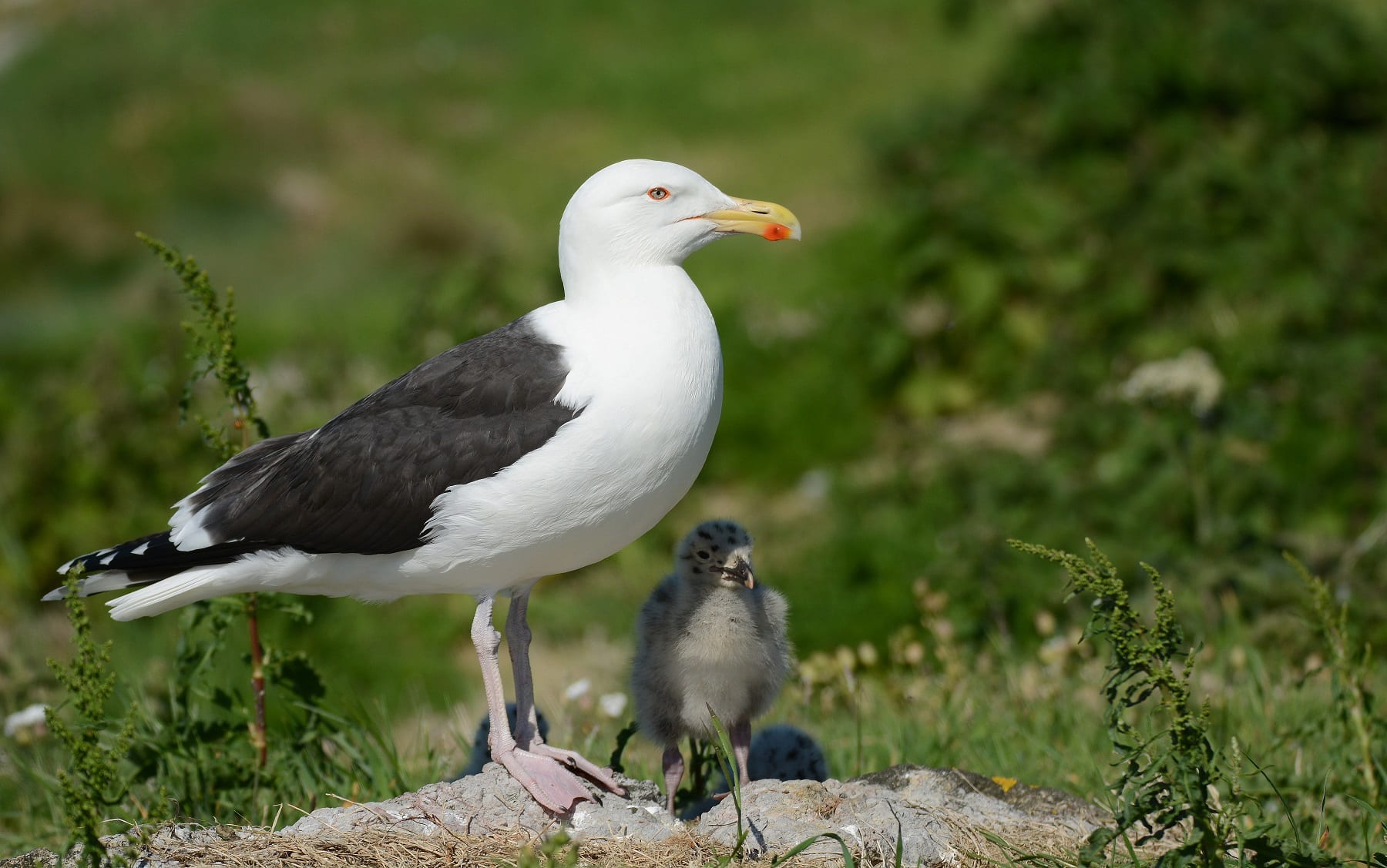We are coming to the end of the Dalkey field season. At the beginning of the season, there were forty-five Arctic Tern nests found between Dalkey island (44 nests) and Lamb island (1 nest). However, significant predation, thought to be primarily due to predation by Brown Rats meant that ultimately, by June 21st all tern nests were predated on both Dalkey and Lamb islands.
As a result of the failure of the tern breeding season on the Dalkey islands, this season, my job on the island has moved in a different direction. I am looking for signs of Avian Influenza, also known as bird-flu, on Dalkey and Lamb islands, particularly in nesting gulls but also in the tern roosts which sporadically form on the islands. Avian flu can spread easily within the avian population.
I also search the gull colony for colour ringed birds, at a safe distance. Colour rings are small rings, with a unique inscription to each bird, that can be read in the field using binoculars or a telescope. It’s accompanied by a small, metal ring, called a BTO ring, which also has a unique code, but is much more difficult to read in the field. The Irish Midlands Ringing Group has been colour ringing Herring Gulls, Lesser Black-backed Gulls and Great Black-backed Gulls on Dalkey Island over the last number of years, with Graham Prole spearheading this work.
 Colour-ringed Great Black-backed Gull (Jean-Marie Gadot).
Colour-ringed Great Black-backed Gull (Jean-Marie Gadot).
It is very interesting and satisfying when you locate a bird with a colour ring. The unique code is used to track several things, including survival and the movement behaviour of these birds. I have been primarily concentrating on the Great Black-backed Gull colony to date, as these birds are more visible on Dalkey Island, and thus easier to ring read. Four of the five Great Black-backed Gull rings that I have read so far, were ringed as adults, with the fifth bird ringed as a chick on Dalkey Island. It was interesting to learn that two of the codes I read had not been spotted in over a year!
While I am very disappointed that the terns have failed this season on the Dalkey islands, I am really enjoying this project and find it the work very interesting. I love working with animals in their natural habitats. It is different from all the jobs I have had before. I have learnt a lot about how to behave around wild birds. As I am occasionally invading their territory when doing vital work, gulls defend their young by swooping down on me or even defecating on me, a common defence tactic in seabird colonies. Despite this, I am still thrilled to be working as the Dalkey Tern Warden this season!
Lucy Barrett


 Colour-ringed Great Black-backed Gull (Jean-Marie Gadot).
Colour-ringed Great Black-backed Gull (Jean-Marie Gadot).